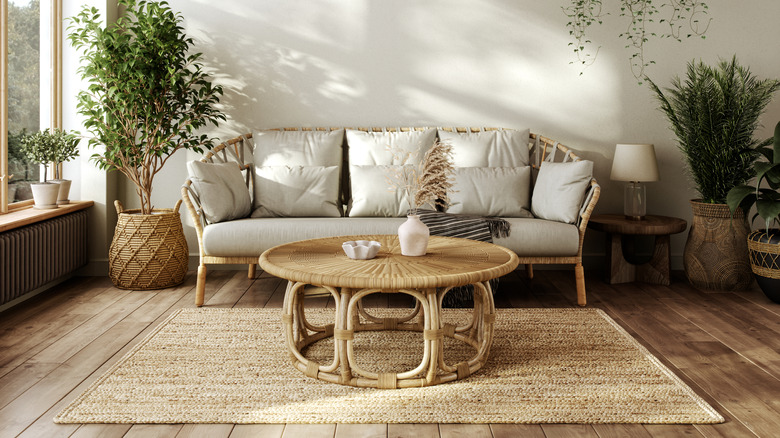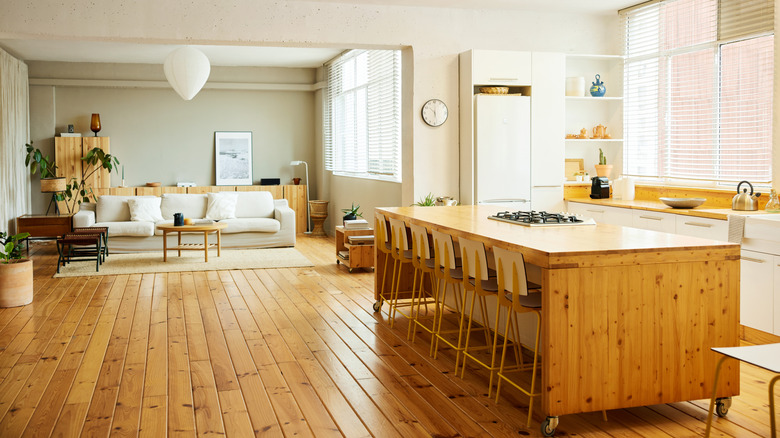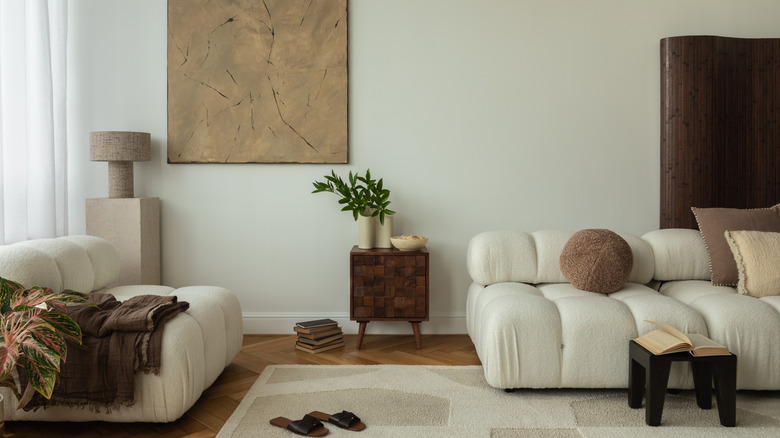Avoid These Common Styling Errors If You Love Your Wood Floors
Wood floors will always be the right choice for a home. Whether it's hardwood, LVT, or laminate, wood or engineered wood is a flooring type that stands the test of time and never seems to go out of fashion. It offers any space a traditional and rustic feel without making too much of a design statement, and the hundreds of different colors and finishes of wood that are available can be tailored to suit your own individual space depending on your preferred aesthetic.
But wooden floors can easily be styled incorrectly. It's important to be aware of the common styling errors that are typically made and how best to avoid them to make your floor shine in the best light. Frequent errors include believing the wood tones of your furniture and flooring have to match, failing to plan out your color scheme, and mixing and matching flooring types in an open-concept space.
Styling choices could make your space feel disjointed
One of the most common mistakes that you'll want to avoid when designing a room with wooden floors is not thinking through your color scheme properly. Wood is generally warm-toned, but there is a wide spectrum of options, all the way from dark, rich mahogany to a lighter washed woods that feel cool and fresh. The color of your wooden floors will determine what kind of color scheme you should go for when choosing the rest of your palette.
If your colors are on point and you still feel like your space doesn't flow, you could be facing an issue with the flooring itself. Are you guilty of choosing different flooring types in an open plan area? This could be why your space is feeling disjointed. If you have an open plan living room and kitchen, one with wooden floors and one with tiles, for example, this can make the entire space feel smaller and like it doesn't belong together.
On the other hand, leaving a vast area of your wood floor exposed can make a space feel bare and uninviting, especially without walls and other features to break it up. In these cases, it's important to add some kind of texture to bring more interest to the space and help visually differentiate separate areas.
How to correct these common errors
Creating depth and dimension is one of the key elements of interior design, so instead of choosing wooden furnishings that perfectly match your floors, which inevitably creates a "flat" room, pick out a variety of different shades of wood that have similar undertones. Creating contrast with a mixture of different tones and textures might seem like a risk, but it can give your space much more variety and interest.
When you're planning your palette, be sure to think through your color scheme carefully. Maximize the use of warm colors in your interior design plans, like creamy neutrals, yellows, and browns, if you have honey-toned flooring. Conversely, for cooler-toned floors, you should lean into grays and blues to create a cohesive color match.
If you're thinking of choosing different floor types for an open-plan space, it may be worth avoiding this by keeping to one type of wooden floor throughout. This doesn't mean you still can't break up your open floor plan, however. Using a rug to zone off a particular area is a great way to solve this issue without compromising on style.


